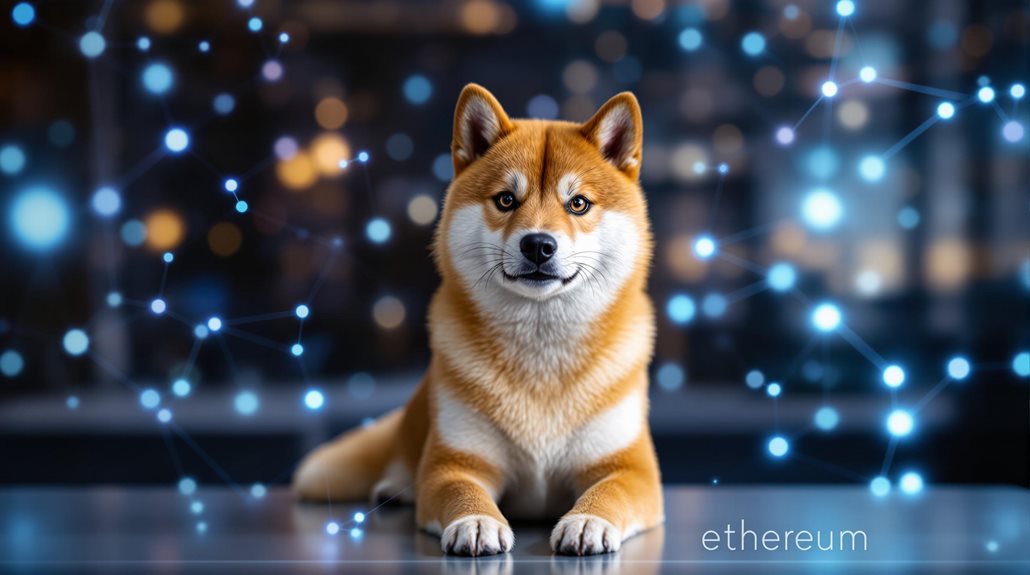RWA (Real-World Assets) in crypto represents physical assets like real estate, art, or gold that have been converted into digital tokens on blockchain networks. This tokenization process allows traditional assets to be bought, sold, and traded more easily through cryptocurrency platforms. It's making investments in expensive items more accessible since people can own small portions through digital tokens. The technology is bridging the gap between traditional finance and the crypto world, with many possibilities ahead.

The world of crypto is expanding beyond digital coins into something called RWA, or real-world assets. RWA involves taking physical things like buildings, art, or gold and creating digital versions of them on the blockchain. It's like turning something you can touch into a digital token that you can buy, sell, or trade.
The process of turning real things into digital tokens isn't simple. First, someone has to choose which asset to tokenize and figure out how much it's worth. Then there's legal work to make sure everything follows the rules. The physical asset needs to be stored safely while digital tokens are created on blockchain platforms. These tokens can generate passive income through rent or dividends. Finally, these tokens can be listed on special exchanges where people can trade them.
One of the coolest things about RWA is that it lets people own just a small piece of something expensive. Think about a million-dollar painting – most people can't buy it outright, but with tokenization, they might be able to own a small share of it. It's making investments more accessible to everyday people and not just the wealthy.
RWA brings several benefits to the crypto world. It makes it easier to buy and sell things that usually take a long time to trade, like real estate. The blockchain technology behind it makes everything more transparent – you can see who owns what and when trades happen. Plus, people from anywhere in the world can participate, as long as they have internet access. Smart contracts help ensure that all ownership tracking and transfers happen automatically and securely.
However, there are some tricky parts to RWA that people need to know about. The rules around these digital tokens aren't always clear, and different countries might have different regulations. There are also technical challenges in making sure everything works smoothly and safely. Keeping both the physical assets and digital tokens secure is really important.
Another challenge is getting traditional markets to accept this new way of doing things. It's not always easy to figure out the right price for tokenized assets, and some people might be hesitant to try something so new. The systems that handle these tokens need to work well with existing financial systems too.
Despite these challenges, RWA is changing how people can invest in and trade real-world items. It's bringing together traditional finance and the new world of crypto, creating more opportunities for people to invest in things they couldn't before. As the technology improves and more people understand how it works, RWA could become a bigger part of both the crypto world and traditional finance.
Frequently Asked Questions
What Are the Main Risks Associated With Investing in RWA Tokens?
The main risks of RWA tokens include market volatility, where prices can change quickly due to limited trading and crypto market swings.
There's also default risk if the asset issuer can't meet their obligations.
Regulatory risks exist because crypto laws are still developing worldwide.
Technical risks involve potential smart contract problems or cyber attacks.
Finally, there are operational risks related to managing and storing the physical assets backing the tokens.
How Do Regulatory Requirements Differ for Traditional Assets Versus RWA Tokens?
Traditional assets like stocks have clear rules and oversight from regulators like the SEC, while RWA tokens often operate in uncertain regulatory territory.
Traditional markets require strict company disclosures and offer investor protections like SIPC insurance.
RWA tokens face varying regulations across different countries, and it's not always clear if they're securities or commodities.
The traditional system is well-established, while RWA token rules are still evolving.
Can RWA Tokens Be Traded Across Different Blockchain Platforms?
Yes, RWA tokens can be traded across different blockchain platforms, but it depends on their technical compatibility.
They'll need to follow specific token standards like ERC20 or ERC721 to work together. Special bridges and protocols help connect different blockchains, making cross-chain trading possible.
However, each blockchain has its own rules and systems, so moving tokens between them requires proper technical infrastructure and security measures to work smoothly.
What Happens to RWA Tokens if the Underlying Physical Asset Fails?
If a physical asset backing RWA tokens fails, several things typically happen.
The token's value often drops considerably or becomes zero. Smart contracts might automatically freeze trading or trigger predetermined protocols.
Token holders' rights are governed by their contractual agreements, and they may be eligible for compensation depending on insurance coverage.
The blockchain still maintains ownership records, but the tokens might be burned or converted through established recovery procedures.
How Is the Valuation of RWA Tokens Determined in Volatile Market Conditions?
During volatile market conditions, RWA token valuations rely on multiple methods working together.
Market comparisons look at similar tokens' prices, while income-based approaches focus on the asset's earnings potential.
Teams often use risk-adjusted calculations to account for market swings.
They'll check trading volumes, price patterns, and how much people are using the tokens.
Sometimes they'll add extra value calculations for low liquidity risks.





